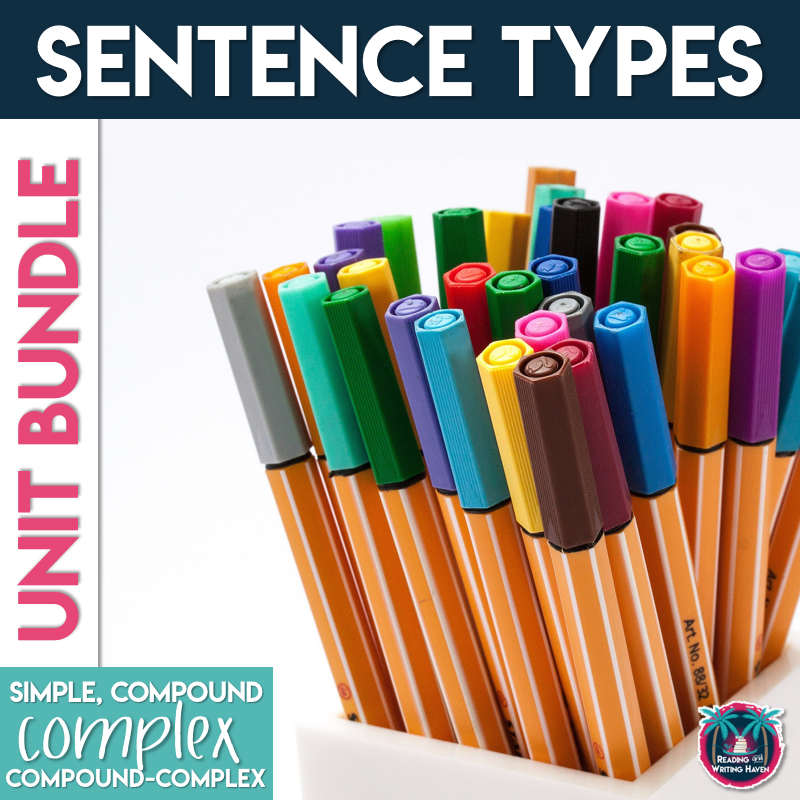16 Meaningful Writing Activities that Engage Students
Looking for writing assignments middle and high school students actually enjoy? Yes! You’re in the right place for exploring relevant, integrated, and visually engaging writing activities.
When most teachers announce a new writing activity, students typically reply with moans, groans, or a sudden onset of stomach flu that requires a pass to the nurse's office right now. Which is your favorite response when you announce your middle or high school students will have the privilege to do some writing in your class? No teacher wants to bore or overwhelm students. Of course, we want to engage them, but writing is….well…an essential skill.
“Maybe essays are an antiquated practice,” someone recently commented in an online community. As I continued to read, I felt my brows furrow, my heart squeeze.
Effective communication in formal settings is extremely important. Students need to be prepared to identify their opinions, support them with solid evidence, identify counterclaims, synthesize ideas, and do it all in both formal and informal contexts.
While it would certainly be the easy thing to do, we can’t just throw essays out like bell bottom pants. Sometimes, students need to develop some grit. Essays? They help them to develop confidence, to think deeply, to take charge of their learning.
Literary analysis responses and argumentative essays are pillars of the secondary ELA curriculum.
Yet, part of the trick to helping students learn to enjoy writing is to build their confidence and stamina with smaller writing assignments that allow for more flexibility. After all, writing should also be a creative buzz that tugs at students’ emotions and provides them with an authentic audience.
Teachers should never feel like they have to sacrifice helping to cultivate a love for writing because of the demanding nature of more formal, academic writing. We really can live in the best of both worlds.
So, what types of writing activities do most middle and high school students actually enjoy? I’ll share my top 5 categories (and 16 specific activities!) of writing lessons that make students smile.
1. REAL-WORLD WRITING
Make writing relevant by connecting it to the real world.
WHY DID YOU GIVE ME A ZERO? I TURNED IN MY PAPER TODAY. PUT IN A GRADE PLEASE. MY PARENTS ARE GROUNDING ME. ALSO, WHAT IS THE EXTRA CREDIT?
Totally over rude, unaddressed student emails? I used to be offended, and then it dawned on me: They just don’t know. Students generally aren’t aware of their tone, let alone how to fix it.
So, I made a fun email etiquette unit to help give students a taste of real-world writing. Here’s what Sarah had to say about this lesson:
“Engaging, but more importantly: this resulted in much better emails from my students.”
2. RELEVANT WRITING
Picture this. Energetic lyrics fill the air as students listen, think critically, and analyze them. Or, students snap a photo of a page from an independent reading book, grinning as they annotate it with gifs, text, emojis, and more.
Spotify and Snapchat are extremely popular apps for students. So, let them channel those passions by creating booksnaps to make connections with a text or or playlists to capture the overarching theme of their year.
Moncada validates the power of tapping into social media for engagement with her review:
“Just what I was looking for to get my students fully engaged. In this era of instagram and snapchat, this tool is going to be a great addition to my lessons! Thanks!”
3. GRAMMAR THAT TRANSFERS TO WRITING
Students: When are we ever going to use this?!
You: Now, we are going to use this now. Because…grammar transfers to writing. That’s why we study it!
Grammar is most meaningful when students can both see and apply grammar lessons in their daily writing. A few of my favorite grammar lessons to teach (because they are interactive and provide multiple, scaffolded learning angles) are commas, prepositional phrases, and sentence types.
And, if you want students to go back and apply grammar to writing they’ve already completed, this free grammar in writing game is perfect for revision sessions!
There’s just something rewarding about working your patootie off, knowing you have learned a challenging skill, and then observing the growth as you apply the skill to something that matters.
4. POETRY Visuals
Reading poetry with students allows us to address several standards. For example, we can analyze complex texts, determine theme, evaluate mood and tone, and assess figurative language.
Unfortunately, the fact that we can address standards doesn’t impress students. So, what can we do to help them enjoy writing poetry or writing in response to it?
One way we can lure them in is by incorporating music and color. Think about tone and mood as being symbolic. What if we put them through a musical equalizer? I use a graphic organizer to help them visualize the mood and tone at different points throughout the text. Because of the color and the visual nature of the organizer, students can see how mood and tone change. Next? They write in response. What causes these fluctuations? How do the literary elements work together and influence one another?
Students DO enjoy poetry-related writing assignments. Try texting couplets (great for practicing rhythm and rhyme!), picture-inspired poetry (visuals are the best), and nonfiction-inspired poetry (because bringing a little creativity to informational texts changes everything).
5. VOCABULARY IN WRITING
The source said the health effects are good. [Sigh]
Tired of reading trite sentences? Helping students to bring life to their word choice in writing is inspiring for all. When I teach word choice lessons using class vocabulary, students experience one of the main reasons we study language. Plus, developing an appreciation for words results in a more curious life that connects to reading and writing.
One of my favorite word choice mini lessons involves bell ringers, word walls, and replacing cliches and colloquialisms with more formal, academic vocabulary.
Plus, you can have students use their vocabulary words in a variety of short creative and informative writing assignments that are not overwhelming for students or teachers but that allow for integration of vocabulary study with writing.
I can 100% relate to what this teacher shared after using these vocabulary in writing activities:
“I love how these activities get the students writing, and isn't that the whole purpose of teaching vocabulary…to ultimately get the students to use the words in their writing? Great activities and my students are enjoying using them.”
Out with the moans, groans, frustration, and suddenly urgent trips to the moon or anywhere outside of the classroom. Meaningful and engaging writing assignments include a dash of real-world, relevant writing opportunities, a pinch of skill transfer, and a sprinkling of creative freedom.
Let’s elevate students’ writing experiences while meeting standards. But, don’t forget to balance tough, academic-style writing with some more flexible options that will engage students and keep them thinking outside the box.
RELATED ARTICLES:
spotlight resource:
Teach students how to integrate all four sentence structures purposefully in writing with these engaging grammar and writing lessons. Perfect for scaffolding!
ABOUT THE AUTHOR
Melissa is the author of Reading and Writing Haven and a collaborative blogger on Teachwriting.org.
A middle and high school English teacher for over a decade now turned instructional coach, Melissa is an avid reader and writer, and she loves sharing ideas and collaborating with fellow educators. Melissa use her degrees in English, Curriculum & Instruction, and Reading as well as her Reading Specialist certification to ponder today’s educational issues while developing resources to help teachers, students, and parents make learning more relevant, meaningful, and engaging.
Visit Melissa on Instagram, Facebook, or Twitter for English teacher camaraderie and practical, engaging teaching ideas.









